Light Pollution
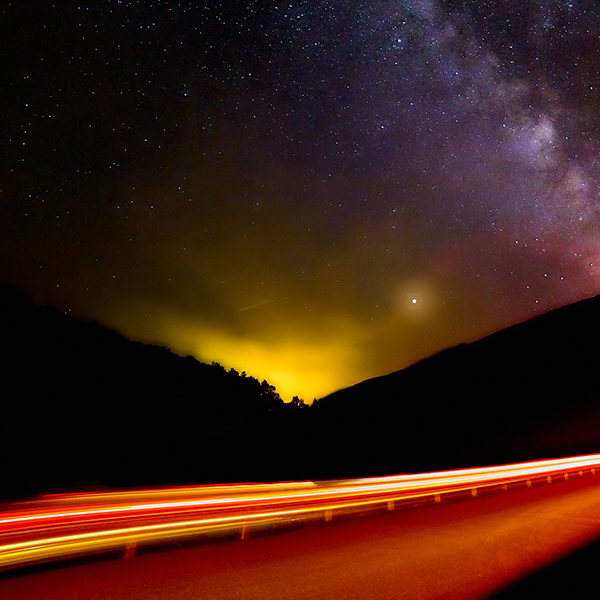
Skyglow from a city and highway (cadop, Pixabay)

Skyglow from a city and highway (cadop, Pixabay)
How does this align with my curriculum?
| Grade | Course | Topic |
|---|
Light can be a type of pollution. Learn about the damage it causes to people and living things as well as how you can prevent it.
Have you ever seen the Milky Way in the night sky? If not, don’t worry. You’re not alone! Over 30% of people in the world can’t see it because of light produced by humans. This is called light pollution.
Light pollution is a waste of energy and money. It can also harm human health, animal health, and ecosystems.
So what can you do to help? As it turns out—plenty!
What is light pollution?
Light pollution is the excessive and disruptive use of artificial light. Most light pollution comes from outdoor lighting, advertisements and streetlights. Another major source is indoor light from large buildings like office towers.
The three main forms of light pollution are glare, skyglow, and light trespass.
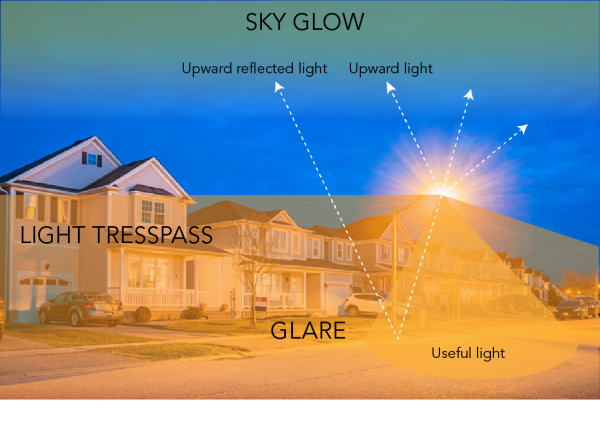
Imagine walking down the street on a really bright day. Suddenly, the windshield of a car reflects sunlight right into your eyes. This is called glare. Glare can make it difficult to see, and can even be painful. At night, glare can be caused by streetlights.
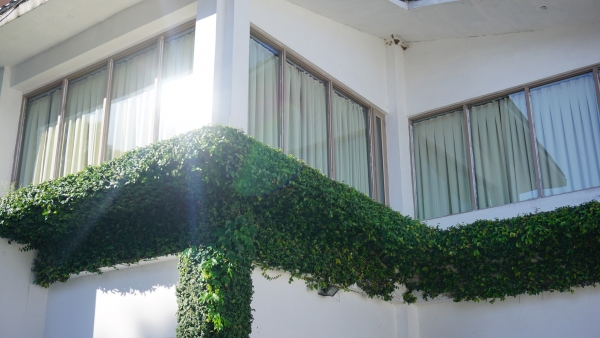
Light trespass is when light shines outside of the area it’s supposed to brighten. Streetlights should only light the street, to make walking and driving safer. But sometimes streetlights can shine into your bedroom. This is an example of light trespass.
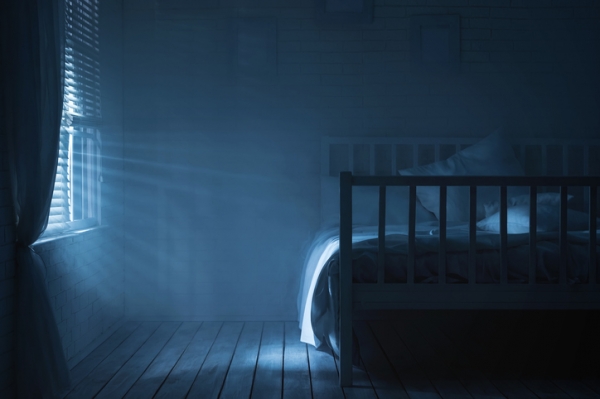
Skyglow is a form of light pollution that makes the night sky brighter. It often looks like a yellow halo around a city. Skyglow happens when too much light shines up into the atmosphere. The light scatters and reflects back down to the ground. When there are more clouds, more light is reflected.
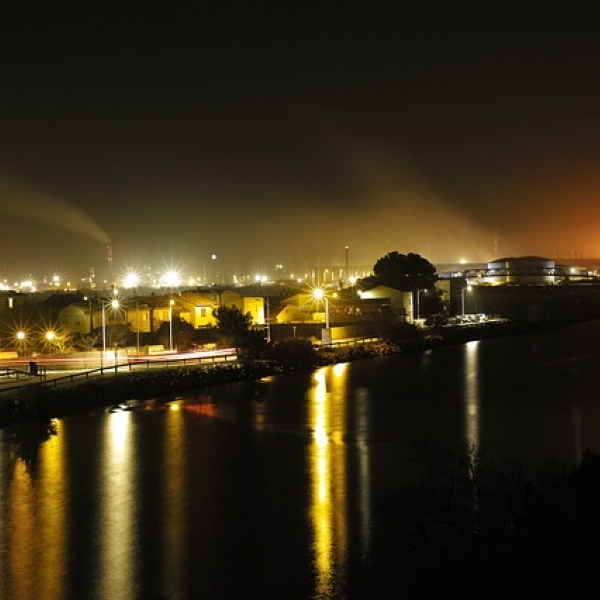
Artificial light reflected in the sky looks a lot brighter than the stars. So skyglow makes it very difficult to see constellations or planets.
Chile is one of the best places to study astronomy because its skies are so dark. Astronomers there discovered that supernovas can produce some of the heavy elements on the Periodic Table. They would not have been able to observe this if there had been a lot of light pollution.
Scientists working at the Cerro Tololo Inter-American Observatory were interrupted recently. A new soccer stadium with bright lights had been built nearby. Luckily, those lights were adjusted. They no longer block out the stars!
Did you know?
Parks Canada protects more dark sky than any other organization in the world. Thirteen parks in Canada have official dark sky designations. The Waterton-Glacier International Peace Park is even an International Dark-Sky Park.
In some places, skyglow is so bright that it looks like daylight. Artificial daylight like this can affect the health of both humans and animals.
How does light pollution harm humans?
Photoreceptors are light-sensitive cells in the retina. The retina is found at the back of your eye. Photoreceptors are responsible for converting light into signals. Our brain interprets these signals as images of the world around us. There are three types of photoreceptors - rods, cones and intrinsically photosensitive retinal ganglion cells or ipRGCs. Rods help us see light and dark. They are very sensitive to light. Cones help us to see colours. Glare can hurt your eyes because it can damage or kill rods and cones. This can lead to vision loss or impairment.
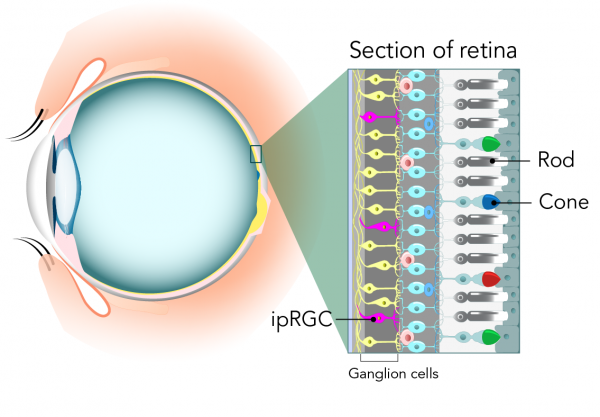
Did you know?
The retina has approximately 120 million rods and 6 million cones.
Scientists think ipRGCs help rods respond to light at many different brightness levels. They may also help regulate circadian rhythms. Circadian rhythms are like an internal clock that our bodies follow every day. Many circadian rhythms are controlled by the light signals around us. So light pollution can disrupt our circadian rhythms.
One circadian rhythm is sleep. Our bodies decide when we should be tired based on the amount of light around us. But light pollution, especially skyglow, can make the day seem longer. This means our normal sleep patterns can be disturbed.
If you don’t sleep properly, you may be irritable or anxious. You may have a hard time concentrating. If someone doesn’t sleep well for a long time, they could develop health problems. These include depression, a weak immune system, diabetes, or a higher chance of getting certain cancers.
How does light pollution harm animals?
Circadian rhythms aren’t just important for humans. Light also controls animal behaviours like sleeping, breeding, migrating and hunting.
Light pollution makes migration difficult for many birds. The Prothonotary warbler depends on stars to find its way from Ontario to the Gulf of Mexico. But light from tall buildings and outdoor advertisements hides its view of the night sky. This means fewer birds survive to reach the areas where they breed or find food during the winter.
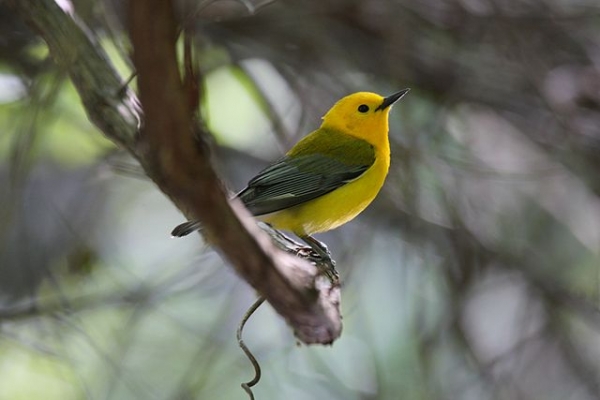
Did you know?
Many birds are attracted to brightly lit buildings at night. Sometimes they collide with windows, causing injury or death.
Light pollution also affects endangered leatherback and loggerhead sea turtles. On Canada’s Atlantic coast, baby turtles on beaches look for moonlight reflecting from the water. This helps them find their way to the ocean. But light pollution can lead them to cities instead. Because of this, fewer sea turtles reach maturity and breed. This puts the survival of the species at even more risk.
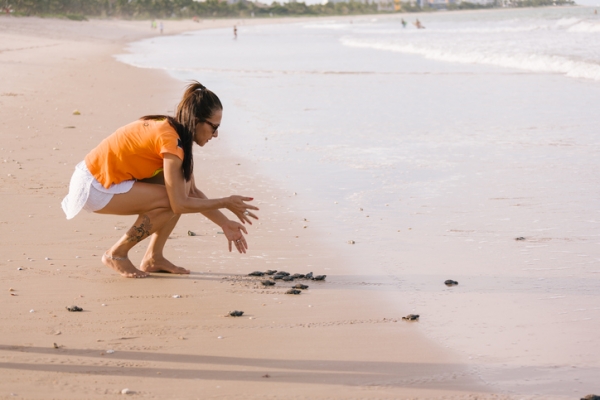
Did you know?
The International Dark-Sky Association estimates that light pollution costs $50 million per year in Quebec. The energy wasted to produce excess light contributes to global climate change too.
How can we reduce light pollution?
Light pollution is preventable! There are a lot of things you can do to reduce your impact. You can also help reduce the impact of your community.
First, you can turn off your lights at night, or close the curtains. Indoor light can cause glare outdoors. Then look at the lights outside your house. Can they be turned off? Or can motion sensors be installed so they only come on when needed? Glare from outdoor lighting can be reduced by shielding light fixtures. You can talk to friends, family, and guardians about making some of these changes at home!
LED lights are often used outdoors. But LEDs can harm humans and animals. Their high-energy blue light reaches far into the eye. This over-stimulates photoreceptors and can lead to vision loss. It’s safer to use lights and filters that are coloured red or yellow.
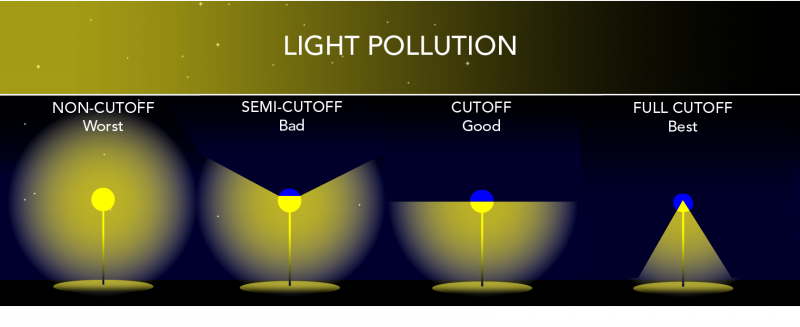
You can also raise awareness about light pollution in your community. This is a powerful way to make change. The International Dark-Sky Association (IDA) is a non-profit organization that aims to protect the night sky. The IDA website has a lot of resources you can use to help spread the word!
Are the lights turned off in your school at night? Maybe that’s a good place to start. You can discuss effective lighting practices with school administrators. Or you could join an environmental club to advocate as a group. If there is no club, you could even start your own!
Everyone can do something to reduce the impact of light pollution. It can even be fun! Remember, no action is ever too small.
What about plants?
Plants are also affected by light pollution. Some plants survive winter by staying dormant when the days are shorter and darker. Artificial daylight from light pollution can change this cycle. This puts the plant’s survival at risk. Light pollution can also affect the behaviour and survival of pollinators.
Starting Points
- When or where have you experienced light pollution?
- Is light trespass a problem in your home? What is the source of the light?
- Where would you go in your community to observe the night sky?
- How would you feel if your neighbourhood or community was darker at night? Explain.
- How can municipalities assist with the problem of light pollution?
- Why is the issue of light glow both an economic concern and an environmental concern?
- What options exist for reducing light pollution in our world?
- Should excess light be called “pollution”? Explain.
- Outline some of the possible effects of light pollution on animals.
- Use ray diagrams to show the path of light emitted and reflected from the four types of shielding fixtures.
- Why can glare and light pollution harm our eyes?
- What impacts does light pollution have on astronomy?
- Our reliance on technology like LED and lighting systems has created light pollution problems. Will technology be able to help reduce this problem? How?
- Design and build a prototype street light for a city that includes shielding to help reduce light pollution.
- Use a digital technology like Micro:bits to design and build a motion-activated light.
- Research articles and images in popular media about light pollution. What sources are providing evidence of light pollution on Earth?
- This article supports teaching and learning of Space Science, Environmental Science, Pollution, Physics, Waves, Sound, Light, and Health related to visible light, pollution, vision, species at risk and sustainable living. Concepts introduced include light pollution, glare, light trespass, skyglow, photoreceptors, retina, ipRGCs, rods, cones, circadian rhythms, migration.
- To consolidate learning after reading this article, teachers could have students complete a Concept Definition Web learning strategy for the concept of light pollution. Ready-to-use reproducibles using this strategy are available in [Google doc] and [PDF] formats.
- To explore this topic further and apply understandings from the article, teachers could have students use a Pros and Cons Organizer learning strategy to consider the pros and cons of reducing light in large metropolitan cities. Ready-to-use reproducibles using this strategy are available in [Google doc] and [PDF] formats.
- To explore the notion of being an advocate, teachers could have students work collaboratively to develop methods of reducing light pollution at school or in their neighbourhood. These plans could include concrete actions for activating these plans.
Connecting and Relating
- When or where have you experienced light pollution?
- Is light trespass a problem in your home? What is the source of the light?
- Where would you go in your community to observe the night sky?
- How would you feel if your neighbourhood or community was darker at night? Explain.
Relating Science and Technology to Society and the Environment
- How can municipalities assist with the problem of light pollution?
- Why is the issue of light glow both an economic concern and an environmental concern?
- What options exist for reducing light pollution in our world?
Exploring Concepts
- Should excess light be called “pollution”? Explain.
- Outline some of the possible effects of light pollution on animals.
- Use ray diagrams to show the path of light emitted and reflected from the four types of shielding fixtures.
- Why can glare and light pollution harm our eyes?
- What impacts does light pollution have on astronomy?
Nature of Science/Nature of Technology
- Our reliance on technology like LED and lighting systems has created light pollution problems. Will technology be able to help reduce this problem? How?
- Design and build a prototype street light for a city that includes shielding to help reduce light pollution.
- Use a digital technology like Micro:bits to design and build a motion-activated light.
Media Literacy
- Research articles and images in popular media about light pollution. What sources are providing evidence of light pollution on Earth?
Teaching Suggestions
- This article supports teaching and learning of Space Science, Environmental Science, Pollution, Physics, Waves, Sound, Light, and Health related to visible light, pollution, vision, species at risk and sustainable living. Concepts introduced include light pollution, glare, light trespass, skyglow, photoreceptors, retina, ipRGCs, rods, cones, circadian rhythms, migration.
- To consolidate learning after reading this article, teachers could have students complete a Concept Definition Web learning strategy for the concept of light pollution. Ready-to-use reproducibles using this strategy are available in [Google doc] and [PDF] formats.
- To explore this topic further and apply understandings from the article, teachers could have students use a Pros and Cons Organizer learning strategy to consider the pros and cons of reducing light in large metropolitan cities. Ready-to-use reproducibles using this strategy are available in [Google doc] and [PDF] formats.
- To explore the notion of being an advocate, teachers could have students work collaboratively to develop methods of reducing light pollution at school or in their neighbourhood. These plans could include concrete actions for activating these plans.
Learn more
Light Pollution 101 | National Geographic (2019)
This video provides an overview of the causes and types of light pollution and its consequences (2:59 min).
This Virtual Museum of Canada page includes an interactive game where you can see how different sorts of light can affect the night sky.
What is light pollution and how does it affect Canadians? (2018)
This article explains why less than 1% of Canadians regularly experience a dark night sky, and what we can do about it.
New Lights Installed Along Florida’s Coastline To Protect Baby Sea Turtles | NBC Nightly News (2018)
This news report shows baby sea turtles making their way to the ocean at night, helped by reduced light pollution (1:54 min).
How much light pollution is there where you live? Is there a dark sky area nearby? Search this map to see.
International Dark-Sky Association
The International Dark-Sky Association works to protect the night skies for present and future generations.This website explains their work and how you can help.
References
Bennett, L. (2018, December). Sea Turtles. The Smithsonian Institute
Blanco County Friends of the Night Sky. (n.d.). How to Prevent Light Pollution.
Canada Under the Stars. (n.d.) Light Pollution.
CBC. (2016, June 11). Lights Drown out Milky Way for the Third of World's Population.
Department of Physics, Florida Atlantic University. (n.d.). Light Pollution Affects the Plants in the Environment.
Department of Physics, Florida Atlantic University. (n.d.). Light Pollution Decimates the Insects in the Environment.
Encyclopedia of the Environment. (n.d.). Impact of light pollution on plants.
International Dark-Sky Association. (n.d.). Light Pollution Wastes Energy and Money.
International Dark-Sky Association. (n.d.). Outdoor Lighting Basics.
International Dark-Sky Association. (n.d.). Take Action.
Lamps Plus Inc. (n.d.). 3 Easy Ways to Dark Sky Lighting.
Nature Conservancy Canada. (2016) Starry, starry night.
Sea Turtle Conservancy. (n.d.). Information About Sea Turtles: Threats from Artificial Lighting.